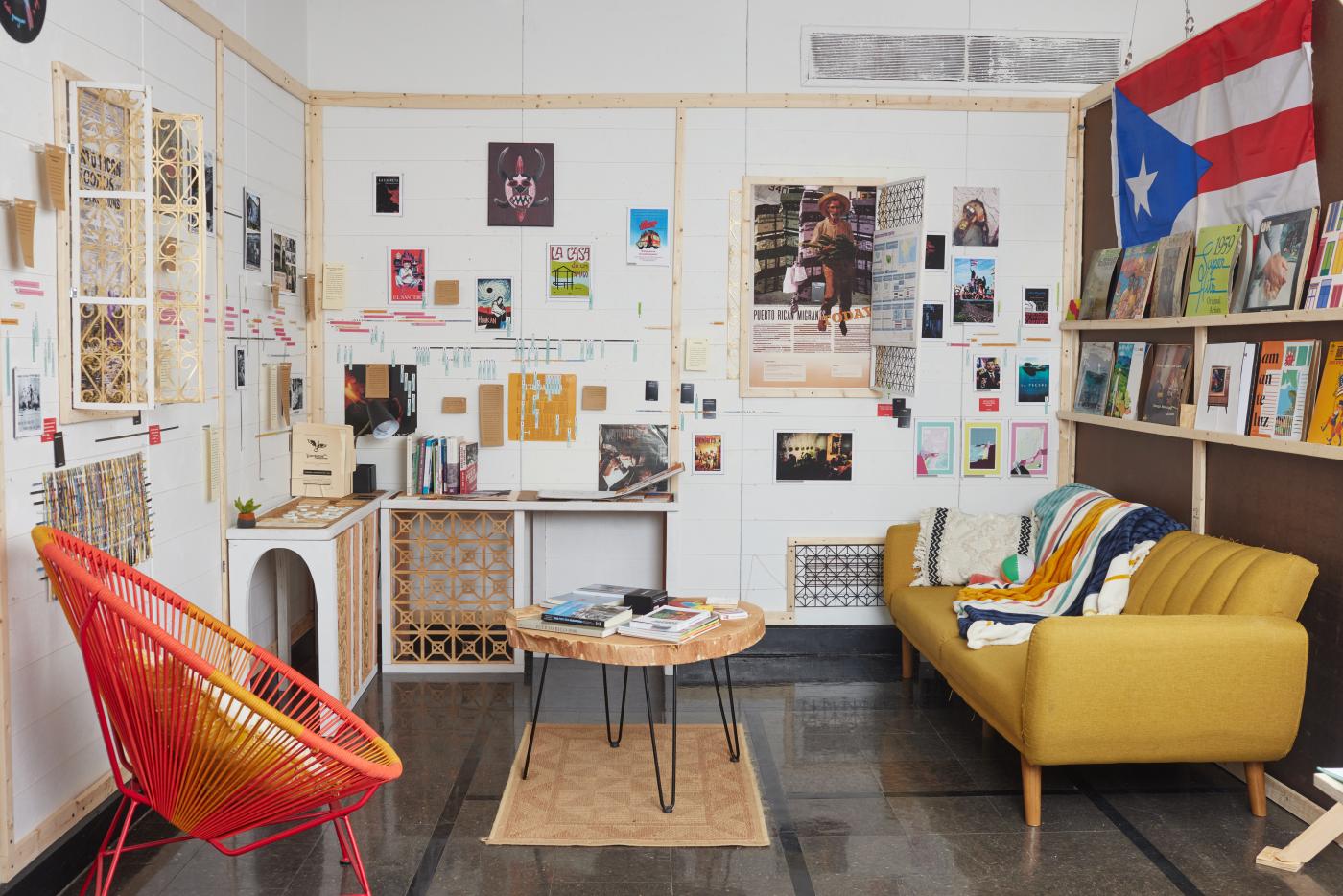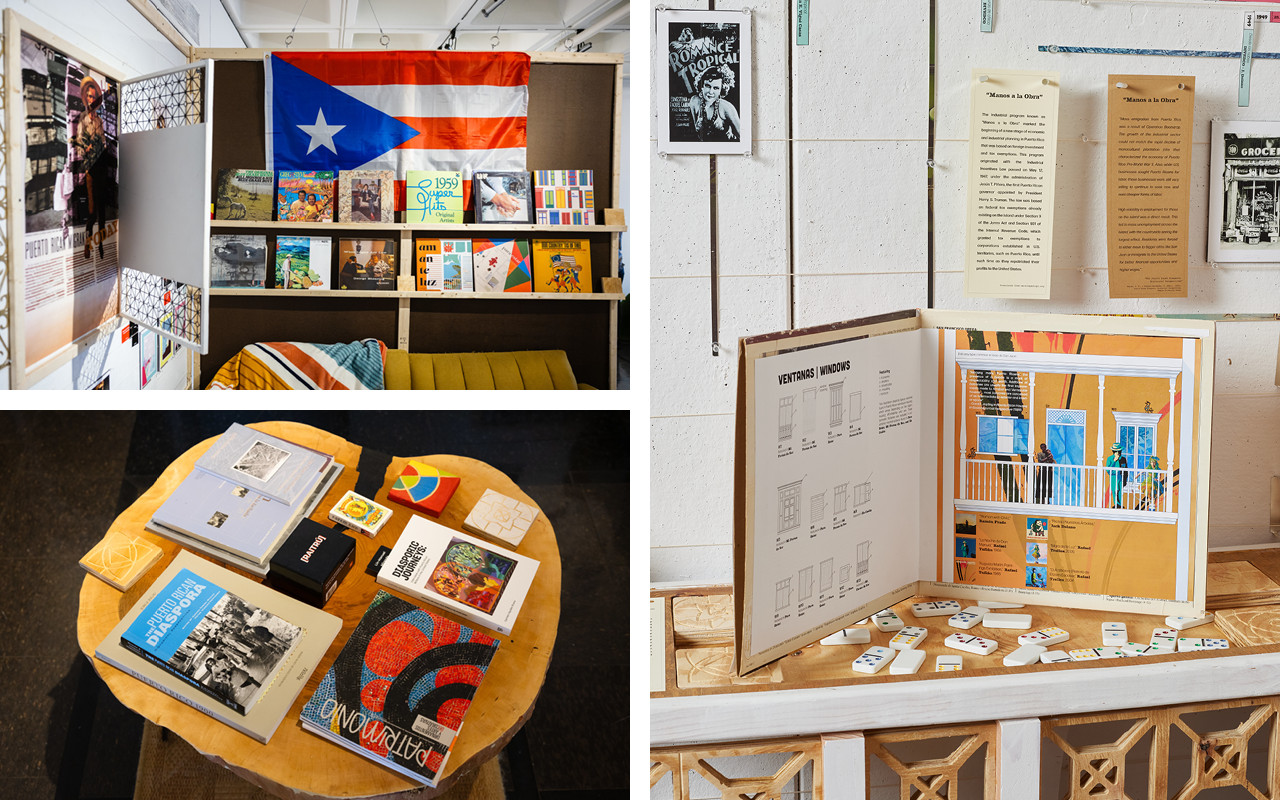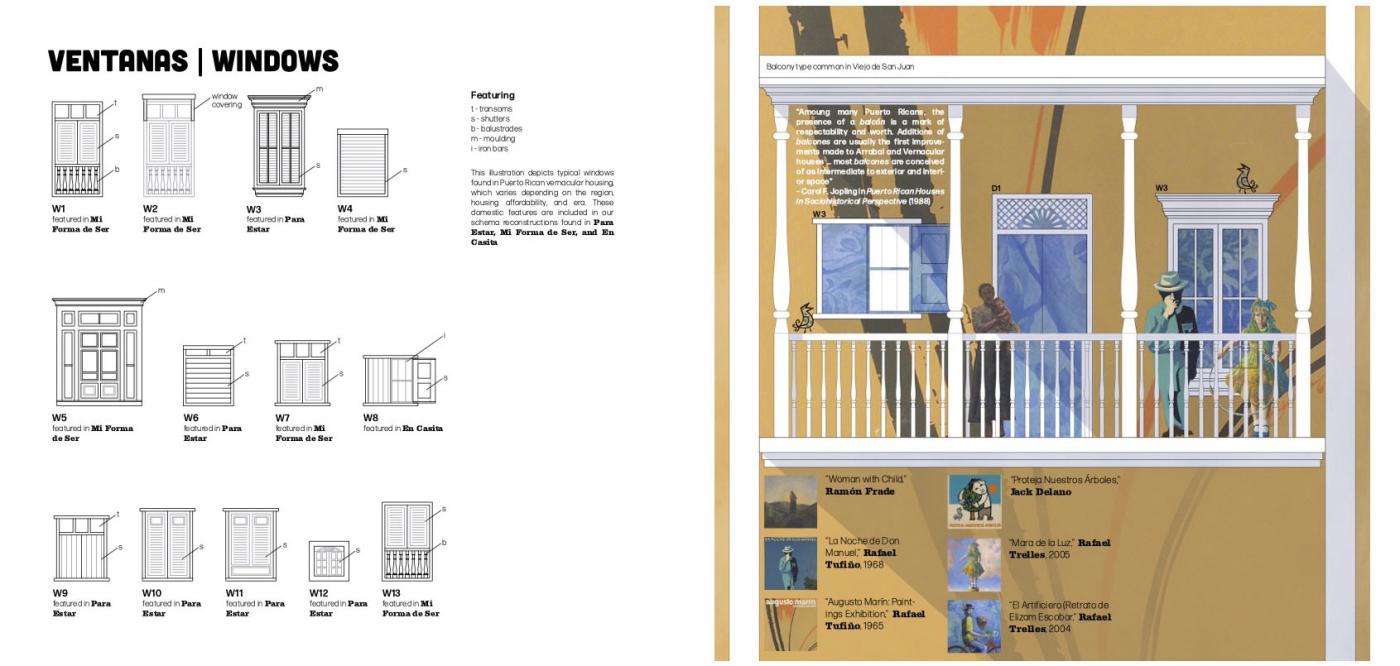
A Hybrid Lens: Isaac Mangual-Martínez on Architecture, Identity, and the Diaspora
For our series on the Virginia Architecture Fellows, we sat down with Isaac Alejandro Mangual-Martínez to discuss the development of his research on architecture as a narrative medium, and his reflections on cultural hybridity. Through his work, Mangual-Martínez explores the intersections of design, identity, and the lived experiences of communities, particularly those of the Puerto Rican diaspora. This piece draws on our recent conversation.
When Mangual-Martínez describes his work, the word “hybridity” surfaces often. It’s a concept that shapes his research, teaching, and design, as well as his understanding of architecture as a living dialogue that reflects the evolving needs and identities of communities. For him, hybridity is not simply a blending of influences but an exploration of how multiple histories, practices, and identities coexist, adapt, and thrive within shared spaces.
Born and raised in Puerto Rico, Mangual-Martínez draws deeply on his cultural heritage and personal history to inform his design approach. His childhood was shaped by hybrid spaces: grandparents who ran a propane gas business out of their home and others who hosted a church in their living room. These early experiences of intertwining domestic and professional spaces profoundly influenced his understanding of architecture as fluid, multifunctional, and inherently personal.

Migration and (Archi)Cultural Entanglement
In spring 2024, Mangual-Martínez unveiled Migration and (Archi)Cultural Entanglement in the Caribbean and the United States: Puerto Rican Records and Constructions, an exhibition that marked the culmination of his first year as a Virginia Architecture Fellow. The installation juxtaposed archival materials with architectural representations to explore the history of Puerto Rican migration, contrasting the Great Migration of the 1950s with the displacement caused by Hurricane Maria.
Through this multi-media installation, designed like a makeshift living room, Mangual-Martínez invited viewers to uncover layered stories of resilience, adaptation, and transformation in the Puerto Rican diaspora, and reflect on the complex relationship between identity and space. A central theme of the show is the hybridity of Puerto Rican homes, where domestic and workspaces blend to meet the needs of both individuals and communities.
Scattered folders containing carpetas (or records) highlight key events and prominent figures in Puerto Rican history and culture. Books on Puerto Rican politics and the diaspora further contextualize the narrative. On one wall, the Puerto Rican flag hangs above a display of vinyl records that evoke the "sold" American Dream, including Our Country ‘Tis of Thee: A Musical History of America From the Time of Capt. John Smith to Today. Interspersed among these albums are custom record covers created by Mangual-Martínez and his team, each cataloging architectural drawings that explore typologies of Puerto Rican buildings and homes.
“My goal was to create a space for conversation,” Mangual-Martínez shares. “Although this work is deeply tied to Puerto Rican identity, migration is a shared experience that resonates with many people in the U.S.”
Looking ahead, Mangual-Martínez plans to expand the exhibition's reach to other universities with the hope of engaging more directly with diasporic communities. He also envisions developing a digital platform where individuals can contribute their own stories and records, helping to amplify and preserve the collective narrative of migration.

Architecture as Storytelling
As Mangual-Martínez enters the second year of his fellowship, he is broadening the scope of his work through collaboration and publication. Partnering with CENTRO, the Center for Puerto Rican Studies at Hunter College, he is delving deeper into archival research and expanding his network to include archivists and librarians who share his interest in diasporic narratives. This phase of his fellowship is marked by a focus on publication and collective dialogue, as he works to connect his research with wider audiences and explore new methods for capturing the stories embedded in architectural spaces.
Mangual-Martínez’s forthcoming paper for CENTRO Journal, titled Beyond the Blueprint: Architectural Representation as Storytelling in Puerto Rican Diasporic Placemaking, critiques the detachment of traditional architectural drawings from lived experiences. He advocates for a hybrid method, blending drafting with art, archival research, and community stories.
“Architectural drawing is layered,” he explains. “It’s a way of visualizing stories, but too often, it prioritizes technical details over cultural narratives.”

Teaching at the Intersection of Mediums and Narratives
Mangual-Martínez’s research approach of fusing ideas from a multiplicity of perspectives, extends seamlessly into his teaching practice, shaping both the content and approach of his architecture studios. “There’s always a hybrid component in studio,” he says. “I’m always encouraging students to work across mediums and with each other.”
This fall, Mangual-Martínez’s ARCH 3010 studio explores the urban fabric of Washington, D.C., examining how voluntary and forced migration have shaped neighborhoods like Adams Morgan and Columbia Heights. Students investigate themes of displacement, belonging, and identity while designing spaces that celebrate the diverse cultural histories of these communities. By blending architectural drafting with film screenings, collage, and interdisciplinary research, Mangual-Martínez encourages students to think expansively about how architecture can honor migration narratives and foster community resilience.
Next semester, his course Intersections: Architecture + Cinema will continue this integrative approach, merging storytelling, visual media, and architectural design. For Mangual-Martínez, this methodology mirrors his research ethos, demonstrating how architecture, like teaching, thrives at the intersection of mediums, disciplines, and lived experiences.
Looking Forward
As his fellowship continues, Mangual-Martínez remains committed to advancing architecture as a medium for storytelling, community building, and cultural preservation. In collaboration with CENTRO, he is delving deeper into Puerto Rican archival research. “There are many ways to capture records,” he reflects. “I want to amass more voices and stories into this growing body of work.”
For Mangual-Martínez, architecture is more than building design; it serves as a medium for preserving heritage and elevating diasporic narratives. His hybrid lens offers a vision of architecture that is as multifaceted as the identities it seeks to represent.
...
The Virginia Architecture Fellowship at UVA School of Architecture supports emerging design practitioners and educators, with a focus on developing creative research and pedagogy at UVA.
|
Image

|
About Isaac Alejandro Mangual-Martínez
Isaac Alejandro Mangual-Martínez, a Virginia Architecture Fellow, explores the narrative potential of architecture through interdisciplinary research on migration, cultural entanglement, and Puerto Rican diasporic communities. With teaching experience at Virginia Tech and Florida A&M University, he is committed to fostering equity, mentorship, and collaboration in academia, emphasizing playfulness and critical engagement in his design studios.
Project Team
Lead Researcher: Isaac Alejandro Mangual-Martínez
Student Research Assistants: Lorena Castillo (Las Carpetas database research and record design), Mikaela Gustitus (record design), Xintong Hu (table research and fabrication), Isabella Koch (furniture construction and assembly), and Mia Rodríguez (record design and visual asset collection)
Archival and Research Support: Aníbal Arocho, Archivist, CENTRO; Elena García, Archivist, AACUPR; Jorge Lizardi, Research Director, AACUPR
Key Resources
(1) Carmelo Esterrich, Concrete and Countryside: The Urban and the Rural in 1950s Puerto Rican Culture, (University of Pittsburgh, 2018)
(2) Carol Jopling, Puerto Rican Houses in Sociohistorical Perspective (University of Tennessee Press, 1992)
(3) Arleen Pabón, La Arquitectura Patrimonial Puertorriqueña y Sus Estilos/Puerto Rican Heritage Architecture and its Styles, (OECH, 2010)
(4) Edwin R. Quiles, La Ciudad de Los Balcones, (University of Puerto Rico, 2009)
(5) Instituto de Cultura Puertorriqueña (ICP)
(6) Architecture and Construction Archive of the University of Puerto Rico (AACUPR)
(7) The Center for Puerto Rican Studies at Hunter College (CENTRO)
The exhibition Migration and (Archi)Cultural Entanglement in the Caribbean and the United States: Puerto Rican Records and Constructions was generously supported by UVA's Office of the Vice Provost for the Arts and the School of Architecture.










